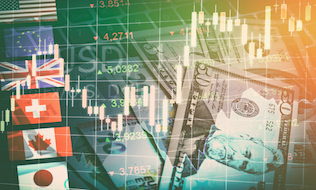

Canadian institutional investors are operating in a landscape that has changed dramatically since the initial market and policy reactions to the coronavirus pandemic.
“A lot has changed over the last five to six months,” said Michael Sager, vice-president and client portfolio manager for multi-asset and currency management at CIBC Asset Management Inc., during a webinar hosted by the Association of Canadian Pension Management on Wednesday.
“We had that period when COVID-19 really intensified in North America at the end of February/ beginning of March, when the primary focus was on the dislocation of markets and really a focus on extreme downside scenarios of how bad it could get. And I think we’ve now pivoted over the last month or so . . . to a much more balanced focus, including on recovery and on opportunity.”
Read: How are global retirement systems faring in the wake of coronavirus?
A never-before-seen shift in monetary and fiscal policy around the world has been a key driver for markets, he said. “We’re seeing unprecedented policy initiatives, not just in the U.S. and Canada, but in emerging markets, which usually respond to crises by maintaining interest rates to protect currencies and minimize inflation risks. This time around, we’ve seen interest rate cuts, money printing, debt issuance — very similar policies to developed markets.”
Opportunities are arising in Europe, he noted, with the continent’s reopening efforts going more smoothly than some predicted. “We’re likely to see the growth leadership in the world economy pivot for the next six to 24 months away from the U.S. and toward Europe, but also Asia, reflecting longer-term structural outlook, longer-term quality fundamentals, but also — in the short term — that those economies opened first. First in, first out, probably means that you’re going to lead the . . . recovery.”
After the 2008/09 financial crisis, worries abounded about inflation, off the back of what was then thought to be rather extreme monetary policy activity, now dwarfed by what central banks are doing today, said Sager. “Here we are again, thinking about what are the implications of the policy initiative. And of course, in the medium term, inflation’s not a risk at all. We’re more focused on deflation . . . but given the likely persistence of the monetary and fiscal stimulus, the amount of debt issuance and amount of money printing we’re likely to see, I do think there’s a bigger risk this time of seeing, not runaway inflation, but at least a move in inflation to at or above targets.”
Read: Investment portfolio rebalancing in the time of coronavirus
As for currencies, the U.S. dollar entered the current crisis riding a 13-year high, he added. “That’s an important starting point, particularly allied to the debt issuance and therefore the unconventional monetary policy we’re about to see over the next few years. That sort of money printing, relative to other countries, is a negative for your currency.”
Meanwhile, the Canadian dollar has made some dramatic moves over the past few months, deflated by the collapse in oil prices and then slowly regaining some strength as the commodity normalized. With the dollar in a weak position, noted Sager, market consensus is that it has room to run before it hits a fair value of around US$0.83. But he disagreed with this consensus, saying that while current conditions could push the currency higher, it’s fair value isn’t quite that high.
Looking to typical core assets, equities are looking far riskier these days, even as return outlooks have started to improve, he said, noting this hazardous environment emphasizes the need for true diversification. “The search for diversified asset classes has become much more difficult because the correlation within, but also across, asset classes has increased significantly. And it makes it much more difficult for a traditional, long-only centralized portfolio to find diversifying strategies.”
Read: Will social bonds’ popularity grow with coronavirus recovery?
With risk in equities rising and bond yields slumping, Sager also said he expects alternatives to step into the spotlight. “Think about complementary assets to fixed income. It would be things like gold — if we’re right and there’s a higher risk of more inflation in the long term, gold will be relevant; infrastructure, real estate that can provide consistent streams of income; and the continued push into alternatives. Not only illiquids, as I’ve just mentioned, but also liquids, because liquidity risk is again being highlighted. . . .
“Thinking about liquid alternatives that can enhance returns in a diversified way, it almost sounds like utopia, but those are some of the things that I would focus on.”
